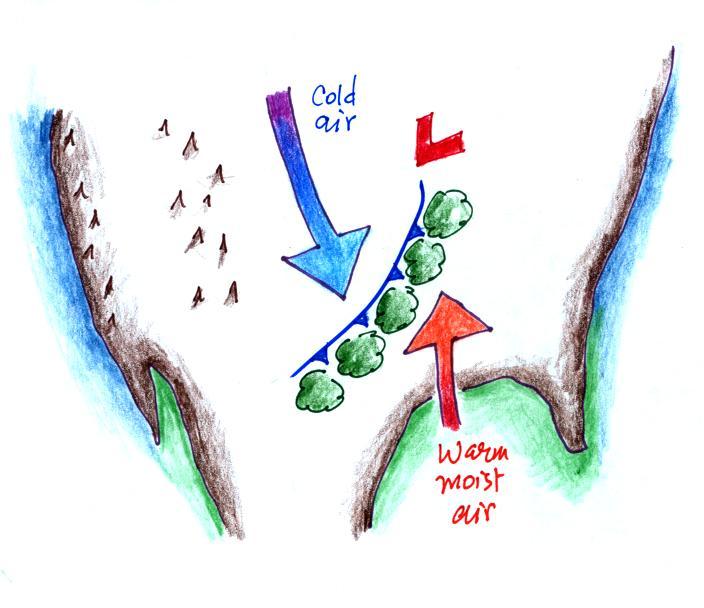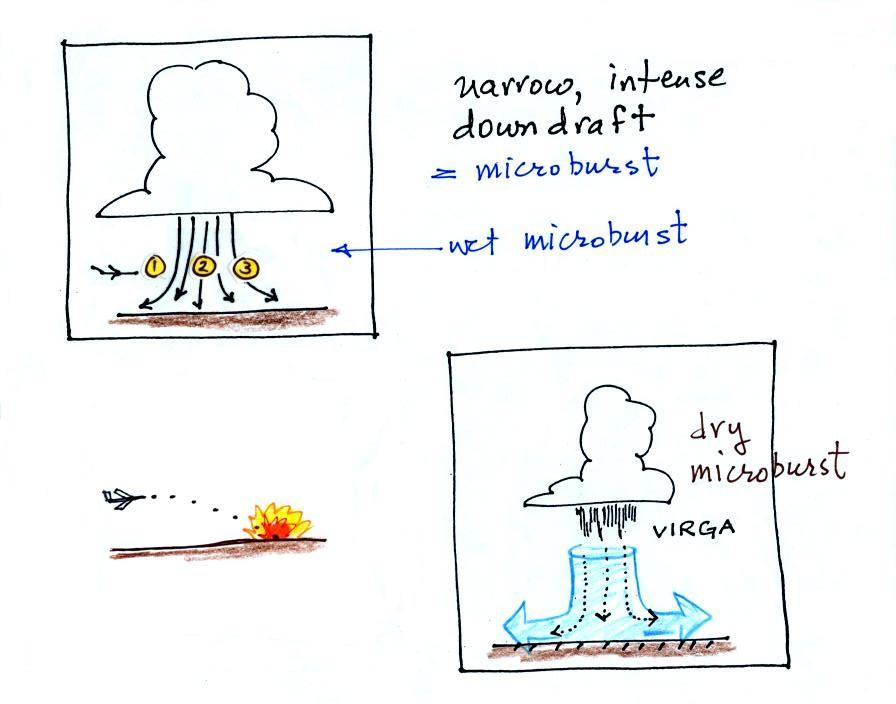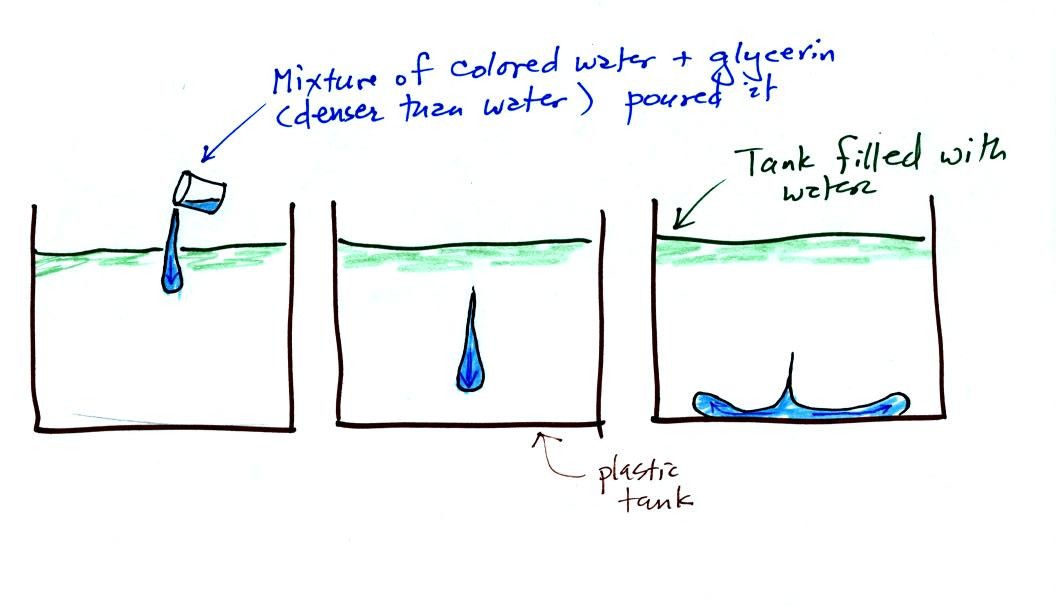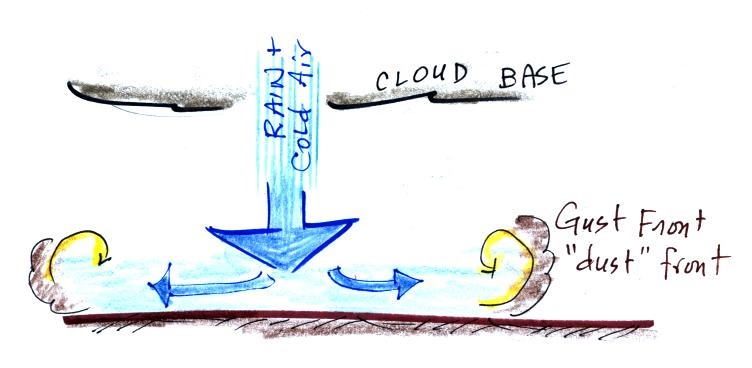Tue., Nov. 19, 2013
A potpourri of musical selections before class today: Eilen
Jewell "Everywhere
I Go", The Be Good Tanyas "When Doves Cry" (which I wasn't
able to find online), Eva Cassidy "Cheek to Cheek",
and Melody Gardot "Who Will
Comfort Me".
The grade summaries that I hoped to have available today will be
handed out on Thursday. I seriously underestimated the
amount of grading that needed to be done over the weekend.
The revised Expt. #2 reports, and the Expt. #4, Scientific
Paper, and Book reports have all been graded and were returned
today. Revisions of the Experiment #3 reports are due next
Tuesday. Everything else is due Dec. 3, the Tuesday after
Thanksgiving. Though if you could get them in before
Thanksgiving that would be a big help.
Most of the 1S1P Assignment #2 reports have been graded.
The exception is the Koppen Climate Classification topic. Assignment #3 reports are due
this week. And that may then well be it for 1S1P
reports. Perhaps a short Bonus Assignment but that's not a
certainty.
Probably also the final
Optional Assignment of the semester is now online.
It's due next Tuesday. You can earn extra credit (up to 0.5
pts) and also a green card if you do a good job on the
assignment. The Controls of Temperature assignment turned in
quite some time ago has been graded and was returned. You'll
find answers
online.
The Quiz #4 Study Guide pt. 1
has made its appearance online. Quiz #4 isn't until Thu.,
Dec. 5
Among the many emails sent to report observations from the
Toilet Flushing Experiment was the following:
"I was able to
analyze the direction of the water in the toilet bowl at
the Eller building on campus and found that the water
moves in a counterclockwise direction.
My
family and I went Kenya, Africa a few years ago and
were able stand on both sides of the hemisphere at one
time. In other words we were at the equator. The tour
guides did a demonstration using water in a bucket. On
one side of the equator the water was going clockwise
and on the other side the water was going counter
clockwise. Additionally, on the equator it self the
water was still."
I showed a short segment from a
television show that appeared on PBS several years
ago. It was called "Pole to Pole" and featured a
demonstration on the equator like the one described
above. I showed a video of the demonstration in
class today. I don't normally show the video
because it erroneously leads people to believe water
does spin in opposite directions in the northern and
southern hemispheres.
I want to be sure that everyone understands
The Coriolis force does
NOT play a role in determining what direction
water draining from a sink or toilet spins.
Either direction should be equally likely in both
the northern and southern hemispheres.
And the Toilet Flushing
experiment bore that out this semester. There
almost equal numbers of reports of clockwise spin
(35) as there were counterclockwise spin (29).
The events leading up to the initiation of a summer air mass
thunderstorm are summarized in the figure below. This is
something we looked at in more detail last Thursday. It takes some effort and often a good part
of the day before a thunderstorm forms. The air must be
lifted to just above the level of free convection (the dotted
line at middle left in the picture). Once air is lifted
above the level of free convection it finds itself warmer and
less dense that the air around it and floats upward on its
own. I've tried to show this with
colors below. Cool colors below the level of free
convection because the air in the lifted parcel is colder and
denser than its surroundings. Warm colors above the
dotted line indicate parcel air that is warmer and less dense
than the surroundings. Once the parcel is lifted above
the level of free convection it becomes buoyant; this is
the moment at which the air mass thunderstorm begins.

Once a thunderstorm develops it
then goes through a 3-stage life cycle

In
the first stage you would only find updrafts inside the cloud
(that's all you need to know about this stage, you don't even
need to remember the name of the stage).

Once precipitation has formed and grown to a certain size, it
will begin to fall and drag air downward with it. This
is the beginning of the mature stage where you find both an
updraft and a downdraft inside the cloud. The falling
precipitation will also pull in dry air from outside the
thunderstorm (this is called entrainment). Precipitation
will mix with this drier air and evaporate. The
evaporation will strengthen the downdraft (the evaporation
cools the air and makes it more dense).
The thunderstorm is strongest in the mature stage. This
is when the heaviest rain, hail, strongest winds, and most of
the lightning occur.
Eventually the downdraft spreads
horizontally throughout the inside of the cloud and begins to
interfere with the updraft. This marks the beginning of
the end for this thunderstorm.

The
downdraft eventually fills the interior of the cloud. In
this dissipating stage you would only find weak downdrafts throughout the cloud.
Note how the winds from one
thunderstorm can cause a region of convergence on one side of
the original storm and can lead to the development of new
storms. Preexisting winds refers to winds that were
blowing before the thunderstorm formed. Convergence
between the prexisting and the thunderstorm downdraft winds
creates rising air that can initiate a new thunderstorm.
Here's a sketch of 4 thunderstorm clouds and a question: what
information could you add to each picture.
You should be able to say something about the first
three. The 4th cloud might be a bit of a puzzle.
You'll find the answer to the question at the end of today's
notes.
The picture below shows some of the features at the base of a
thunderstorm.
The cold downdraft air spilling out of a
thunderstorm hits the ground and begins to move outward from underneather the thunderstorm. The
leading edge of this outward moving air is called a gust
front. You can think of it as a dust front because the
gust front winds often stir up a lot of dust here in the desert
southwest (see below).
The gust front in this picture
(taken near Winslow,
Az) is moving from the right to the left.
Visibility in the dust cloud can drop to near zero which
makes this a serious
hazard to automobile traffic. Dust storms like this
are sometimes called "haboobs".
There's lots of video on YouTube of an impressive dust storm a
summer or two ago. Here's an example
from Gilbert Arizona. Another
from South Mountain (same storm seen from a different
location). You can see day literally turn to night when the
dust cloud is overhead.
A narrow intense
downdraft is called a microburst. At the ground microburst
winds will sometimes reach 100 MPH (over a limited area); most
tornadoes have winds of 100 MPH or less. Microburst winds
can damage homes (especially mobile homes that aren't tied to
the ground), uproot trees, and seem to blow over a line of
electric power poles at some point every summer in Tucson.
Microbursts
are a serious threat to aircraft especially when they are close
to the ground during landing or takeoff. An inattentive
pilot encountering headwinds at Point 1 might cut back on the
power. Very quickly the plane would lose the headwinds
(Point 2) and then encounter tailwinds (Point 3). The
plane might lose altitude so quickly that it would crash into
the ground before corrective action could be taken.
Microburst associated wind shear was largely responsible for the
crash of Delta
Airlines Flight 191 while landing at the Dallas Fort Worth
airport on Aug. 2, 1985 (caution the audio contains some of the
actual cockpit communications).
Falling rain could warn of a wet
microburst (see photo below). In other cases, dangerous dry microburst
winds might be invisible (the virga,
evaporating rain, will cool the air, make the air more dense,
and strengthen the downdraft winds).
Here are three microburst videos
from YouTube. The first
video shows a microburst from some distance away.
The second
video was taken in the heavy rain and strong winds under a
thunderstorm in the microburst. You'll see a power pole
snapped in half by the microburst winds at about 2:26 into the
video. I showed portions of a 3rd video
in class. It was taken in or near San Tan AZ. The
microburst doesn't look too impressive at the start of the footage
but the storm winds soon get pretty violent and cause some damage.
I had planned on showing another of my "homemade videos",
a microburst demonstration, but wasn't able to find the tape.
In the video a
large plastic tank was filled with water,
the water represents air in the atmosphere. Then a
colored mixture of water and glycerin, which is a little
denser than water, is poured into the tank. This
represents the cold dense air in a thunderstorm
downdraft. The colored liquid sinks to the bottom of
the tank and then spreads out horizontally. In the
atmosphere the cold downdraft air hits the ground and
spreads out horizontally. These are the strong winds
that can reach 100 MPH. This is sketched below.
Note the characteristic curling motion at the outer edge of the
gust front.
A sketch and a photograph of a
shelf cloud. Warm moist air
if lifted by the cold air behind the gust front which is
moving from left to right. The shelf
cloud is very close to the ground, so the warm air must
have been very moist because it didn't have to rise very
far before it had cooled enough to become saturated and
form a cloud. Here are a
couple of pretty good videos of shelf clouds (Grand Haven,
MI and Massillon,
OH)
Next we need to look at some of the conditions that can lead to
severe thunderstorm formation and some of the characteristics of
these storms. Severe thunderstorms last longer, grow bigger,
and become stronger than ordinary air mass thunderstorms.
They can also produce tornadoes.

Severe storms are more likely to form
when there is vertical wind shear (the picture above is on p.
154a in the ClassNotes). Wind shear (Point 1) is changing wind
direction and/or wind speed with distance. In the case
shown above, the wind speed is increasing with increasing
altitude, this is vertical wind shear.
A thunderstorm that forms in this kind of an environment will move at an average of
the speeds at the top and bottom of the cloud (pt. 2).
The thunderstorm will move to the right more rapidly than the
air at the ground which is where the updraft begins.
Rising air that is situated at the front bottom edge of the
thunderstorm will find itself at the back edge of the storm
when it reaches the top of the cloud.
This produces a tilted updraft (pt.
3). The downdraft is situated at the back of the
ground. The updraft is continually moving to the right
and staying away from the downdraft. The updraft and
downdraft coexist and do not "get in each others way."
If you remember in air mass thunderstorms, the downdraft gets
in the way of the updraft and leads to dissipation of the
storm.
Sometimes
the tilted updraft will begin to rotate. A rotating
updraft is called a mesocyclone (pt. 4). Meso refers to medium size
(thunderstorm size) and cyclone means winds spinning around
low pressure (tornadoes are sometimes called cyclones).
Low pressure in the core of the mesocyclone
creates an inward pointing pressure gradient force needed to
keep the updraft winds spinning in circular path.
The cloud that extends below the cloud
base and surrounds the mesocyclone
is called a wall cloud
(pt. 5). The largest and strongest tornadoes will
generally come from the wall cloud. We'll see some
pretty dramatic videos of wall clouds on Thursday.
Note (pt. 6) that a tilted updraft also provides a way of
keeping growing hailstones inside the cloud. Hailstones
get carried up toward the top of the cloud where they begin to
fall. But they then fall back into
the strong core of the updraft and get carried back up
toward the top of the cloud.
A wall cloud can form a little bit below the rest of the base
of the thunderstorm. Clouds form when air rises, expands,
and cools as shown above at left. The rising air expands
because it is moving into lower pressure surroundings at higher
altitude. Only when the air has risen high enough, moved
into low enough pressure, expanded and cooled enough will a cloud
form.
At right the air doesn't have to rise to as high an altitude to
experience the same amount of expansion and cooling. This is
because it is moving into the core of the rotating updraft where
the pressure is a little lower than normal for this
altitude. Cloud formation is a little bit closer to the
ground.
Here's a picture of a portion of the bottom of a
thunderstorm with a wall cloud and, what appears to be, a
relatively weak tornado (narrow diameter and almost
transparent). Photo from
the University Corporation for Atmospheric Research
Now on to tornadoes.
The United States has roughly 1000 tornadoes
in an average year. That is more than any
other country in the world .
A year's worth of tornado
activity plotted on a world map. Note the name
at bottom left: T.T. Fujita, "Mr. Tornado." The
scale used to rate tornado strength and intensity is
named after him.
Part of the reason why the central
US
has
some
many
tornadoes
is
just a consequence of geography.

Without any mountains in the
way, cold dry air can move in the spring all the way
from Canada to the Gulf Coast. There it collides
with warm moist air from the Gulf of Mexico to form
strong cold fronts and thunderstorms. There are
some other meteorological conditions that come into play
that make these storms capable of producing tornadoes.

This map (found on p. 161 in the
ClassNotes) shows the average frequency of tornado
occurrence in the US. Tornadoes have been observed
in every state (including Alaska), but they are most
frequent in the Central Plains, a region referred to as
"Tornado Alley" (highlighted in red, orange, and yellow
above).
Here are some basic tornado characteristics (the figure above
is also on p. 161)
1. About 2/3rds (maybe 3/4) of tornadoes are
F0 or F1 tornadoes (this is referring to the Fujita Scale,
which we'll learn more about on Thursday) and have spinning
winds of about 100 MPH or less. Microburst winds can
also reach 100 MPH. Microbursts are much more common in
Tucson in the summer than tornadoes and can inflict the same
level of damage.
2. A very strong inwardly directed pressure
gradient force is needed to keep winds spinning in a circular
path. The pressure in the center core of a tornado can
be 100 mb less than the pressure in the air outside the
tornado. This is a very large pressure difference in
such a short distance. The
PGF
is
much
stronger
than
the
Coriolis
Force
(CF)
and
the
CF
can
be
neglected.
The same pressure drop can be found in strong hurricanes but
it takes place over a much larger distance. The PGF
isn't as strong and the CF does play a role.
3. Because the Coriolis force doesn't play a
role, tornadoes can spin clockwise or counterclockwise, though
counterclockwise rotation is more common. This might be
because larger scale motions in the cloud (where the CF is
important, might determine the direction of spin in a
tornado).
4, 5, 6. Tornadoes usually last only a few
minutes, leave a path on the ground that is a few
miles long, and move at a few 10s of MPH.
There are exceptions, we'll look at one shortly.
7, 8. Most tornadoes move from the SW toward
the NE. This is because tornado-producing thunderstorms
are often found just ahead of a cold front where winds often
blow from the SW. Most
tornadoes
have
diameters
of
10s
to
a
few
100s of
yards
but
tornadoes
with
diameters
over
a
mile
have
been
observed. Tornado diameter can also be much larger near
the base of the thunderstorm than it is near the ground.
9, 10. Tornadoes
are
most
frequent
in
the
Spring.
The
strongest
tornadoes
also
occur
at
that
time
of
year.
You
don't need to remember the specific months. Tornadoes
are most common in the late afternoon when the atmosphere is
most unstable.

A
little more infomation from p. 161 that wasn't mentioned in
class.
At the present time about 75 people are killed every year in the
United States by tornadoes. This is about a factor of ten
less than a century ago due to improved methods of detecting
tornadoes and severe thunderstorms. Modern day
communications also make easier to warm people of dangerous
weather situations. Lightning and flash floods (floods are
the most serious severe weather hazard) kill slightly more people
than tornadoes. Hurricanes kill fewer people on average than
tornadoes. The increase in the number of tornadoes observed
per year is probably more due to there being more people in
locations that are able to observe and report a tornado rather
than a true increase in tornado activity.
I hurried through the following figure at the end of class.
This figure traces
out the path of the 1925 "Tri-State
Tornado" . The tornado path (note the SW to NE
orientation) was 219 miles long, the tornado lasted about
3.5 hours and killed 695 people. The tornado was
traveling over 60 MPH over much of its path. It is still
today the deadliest single tornado ever in the United States
(you'll find a compilation of tornado records here).
The Joplin
Missouri tornado (May 22, 2011) killed 162 people making
it the deadliest since 1947 and the 7th deadliest tornado in US
history.
Tornadoes often
occur in "outbreaks." The paths of 148 tornadoes
during the April 3-4, 1974 "Jumbo
Tornado Outbreak" are shown above. Note
the first tornadoes were located in the upper left
corner of the map and all of the tornado paths are
oriented from SW to NE.
The April
25-28, 2011 outbreak is now apparently the largest
tornado outbreak in US history (358 tornadoes, 346 people
killed)
Tornado activity and tornado outbreaks in November,
like we had last weekend, is unusual. The outbreak
this past Sunday is one of the largest November
outbreaks ever.
Here's the answer to a question embedded in today's notes.

The first 3 pictures shows the different
stages in the lifetime of an air mass thunderstorm.
There's a tilted updraft in the 4th picture which is a
characteristic of a severe thunderstorm.























